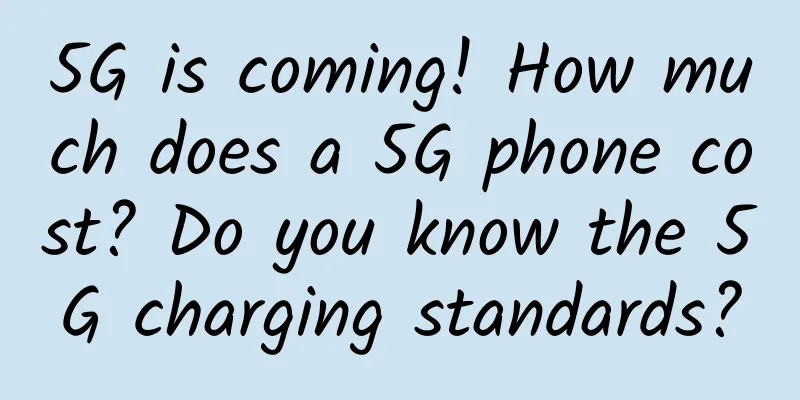Do I need to upgrade to WiFi 6? Find out here

|
2020 is destined to be an extraordinary year. The epidemic has swept the world, and remote home office and classes have become the new normal. Take a family of three as an example. The two adults working from home often need to participate in video conferences, and the children need to take online classes at home. There is often a rush for network speed, which makes the remote video conference and online class experience poor. And with the entry of gigabit broadband into homes, upgrading WiFi 6 routers has become the choice of many users. Judging from market data, 2020 has become the first year for the popularization of WiFi 6. In the post-epidemic era, online behaviors such as remote video conferencing, remote work, and online classes have become the new normal, so the demand for WiFi 6 routers in households will continue to grow. With the continuation of the policy of increasing speed and reducing fees, home broadband has further increased in speed, starting at 300M and capped at 1000M. As high-speed broadband is further popularized in households, the slogan of building a "three-gigabit" network was proposed on Telecom Day. Among them, WiFi 6 routers undertake the task of gigabit home wireless broadband. Major operators and manufacturers have jointly produced WiFi 6 customized optical modems and routers, further promoting the popularization of WiFi 6 routers. But many friends still don’t understand why WiFi 6 is better than the current WiFi 5? And why should I upgrade to a WiFi 6 router? First, let's take a look at the characteristics of WiFi 6. Compared with the most popular WiFi 5, WiFi 6 is faster, supports more concurrent devices, has lower latency, and lower power consumption. WiFi 6 uses the OFDMA technology that is the same as 5G, combined with 1024-QAM high-order modulation, which can support a maximum bandwidth of 160MHz, which is nearly three times faster than WiFi 5. Intelligent frequency division technology can support more devices concurrently and increase the access device capacity by 4 times. Multiple concurrent access devices can reduce queuing, actively avoid interference coloring, and reduce latency by two-thirds. When the terminal device is on standby, it supports on-demand wake-up function, which reduces terminal power consumption by 30%. We can compare the scenario of router-to-device transmission to a fleet. Under the Wi-Fi i5 standard, a fleet can only deliver to one customer at the same time. Even if there are empty cars, they will be dispatched as usual. If a car breaks down (is interfered with), the entire fleet cannot be dispatched. Under the WiFi 6 standard, a fleet that departs at the same time can form a small team of at least 26 adjacent cars. Each team can deliver to different customers. If a car breaks down (is interfered with), it only affects the team it is in. When we are at home, we often find our neighbors' WiFi signals, which can interfere with our own WiFi transmissions. The interference coloring technology used by WiFi 6 can mark neighboring network signal frames that pass through walls, allowing the user's router to ignore them. The WiFi signals between neighbors can transmit data simultaneously on the same channel without interfering with each other, reducing the interference rate by 30%. The power consumption of WiFi 6 and WiFi 5 is very different. WiFi 6 will negotiate with the terminal on the WiFi wake-up time to wake up on demand, and no power is consumed during other sleep time. WiFi 5 can only communicate with one device at a time, and all terminals connected to the same route are either in transmission state or in waiting state, and they are disorderly, and the waiting state still consumes power. It can be seen that WiFi 6 surpasses WiFi 5 in all aspects. Currently, laptops, smartphones, tablets and other products launched in the second half of 2019 are all equipped with WiFi 6 wireless network cards. If users upgrade their home routers to WiFi 6 routers, they can enjoy a faster WiFi Internet experience. Therefore, it is still necessary to replace the WiFi 6 router. However, if there is no WiFi 6 terminal at home, it is not necessary to upgrade the WiFi 6 router. |
<<: Tested in 6 cities! How fast can 5G uplink with Super Uplink run?
>>: Facebook launches new AI project to learn from videos
Recommend
5G competition is not just about speed, security mechanisms need to be clarified
Currently, 5G standardization has been fully laun...
The secret to a fast-growing business: SD-WAN technology
According to the latest survey statistics from a ...
Acceleration Cloud: Deyang High-Defense Cloud Server 39 yuan/month-dual core/2G memory/60G hard disk/5M bandwidth/100G defense
Acceleration Cloud is a website under Chengdu Xia...
TCP/IP Appetizer: HTTP
[[381273]] This article is reprinted from the WeC...
Why is CDN technology essential to building the foundation of the metaverse?
The speed and convenience brought by the Internet...
Edge networks are evolving towards intelligence and computing enhancement
"Always on, always connected" has becom...
With the support of 5G, the education industry is ushering in intelligent transformation
In 2020, my country's 5G network construction...
16 real-life digital transformation success stories
【51CTO.com Quick Translation】CIOs of leading comp...
The interviewer asked about the ZAB protocol right away, and I was trembling...
[[391275]] Zookeeper achieves the final consisten...
Blockchain: a panacea for wealth or deadly arsenic?
Blockchain has been talked about a lot recently. ...
Data security protection: How to choose between full backup, incremental backup and differential backup?
In IT operation and maintenance, data backup is v...
Ministry of Industry and Information Technology: The total number of 5G base stations in my country has reached 819,000
Recently, the Ministry of Industry and Informatio...
Global IoT application revenue is growing, but the company is in urgent need of finding a platform
Enterprises and public sectors around the world a...
Traveling across China in the name of ecology, Huawei China ICT Ecosystem Tour 2017 exhibition vehicle officially launched
[Changsha, China, March 10, 2017] Huawei, the wor...
Don’t understand TCP three-way handshake and four-way wave? Interviewer: Go back and wait for notification!
🌟 Opening: You think you know TCP? Actually... Co...









